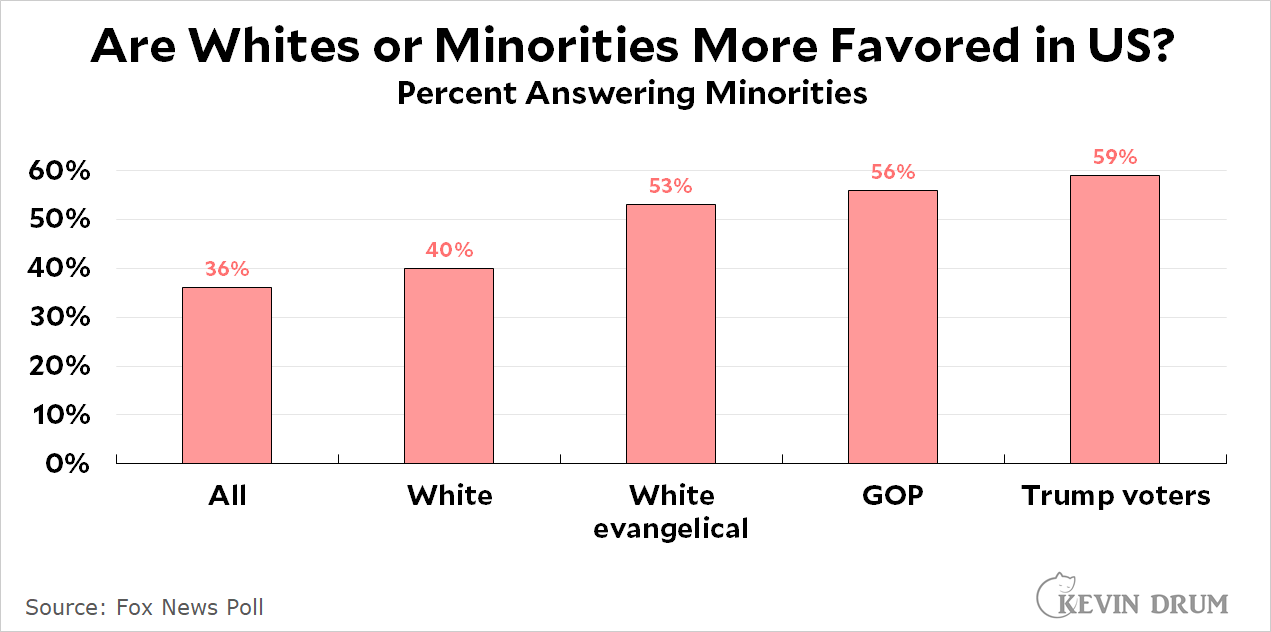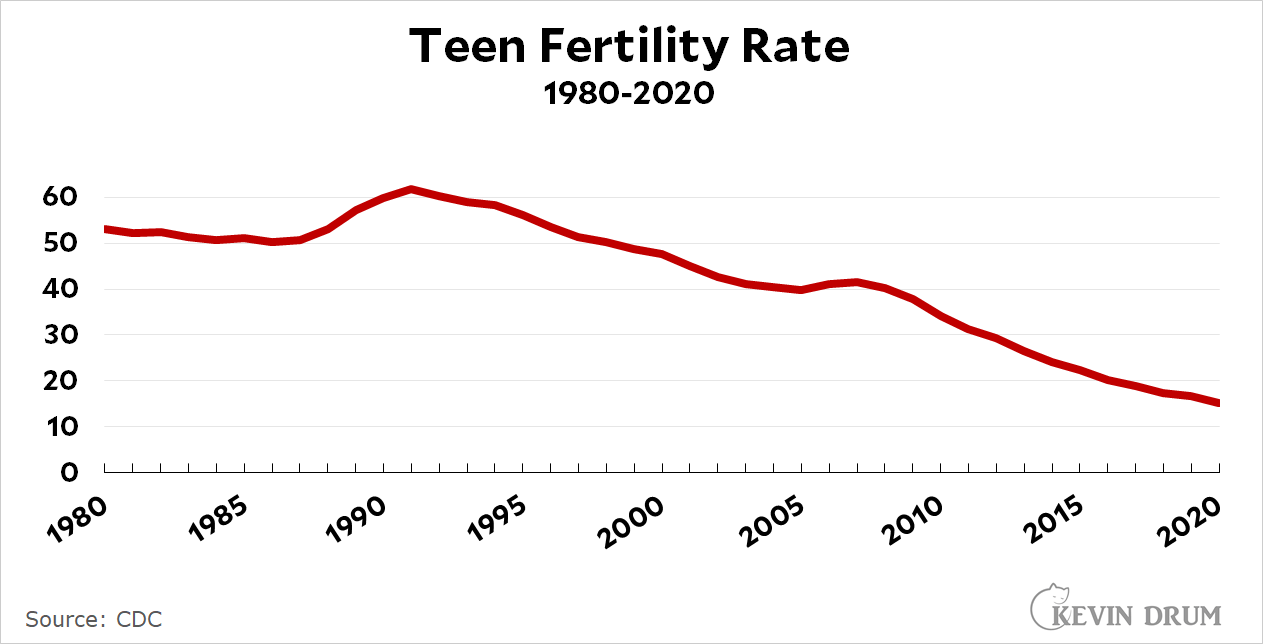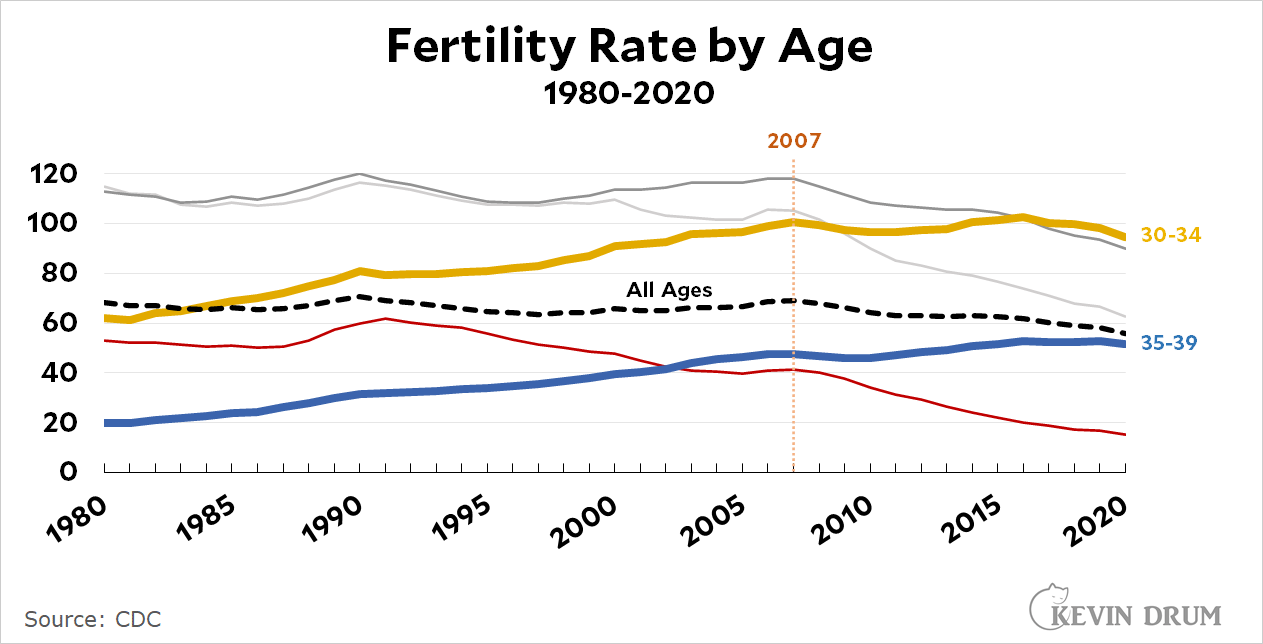Since American history is now front and center in our national, um, discourse, I thought I should share a tidbit of history about history. There's no special reason for this except that (a) it's true and (b) it's history that I'll bet a lot of progressives no longer remember if they ever knew it at all.
Back in 2014 the folks who make up curriculum guidelines for the AP history course decided to update things. This prompted dismay from conservatives and got a fair amount of press coverage at the time. Nothing like what's going on today, however, so you might have missed it. Here's a description from David Casalaspi, a mainstreamish liberal who's an education policy analyst for the National Governors Association:
The maligned 2014 framework represented a first attempt by the College Board to produce a coherent narrative of American history which would encourage teachers to stop teaching history as a collection of trivia facts and instead teach the subject more thematically. In doing so, though, it pressured teachers to adopt racial and gender conflict as the dominant paradigm of historical development.
In this way, the 2014 framework listed “Identity” — with an emphasis on racial and gender grievances — as the first of seven “organizing themes” for the teaching of American history. Additionally, the framework was littered with references to “white Americans,” “white settlers,” “white pioneers,” and their racial biases. The concept of Manifest Destiny, for instance, was described as “built on the belief in white racial superiority.” And one of the only things students had to know about World War II was that the dropping of the atomic bomb and the internment of Japanese citizens led to the questioning of American values.
....I am a liberal, but I often found myself agreeing with conservatives on this issue because I am wary of any U.S. history curriculum that both infringes upon the free speech of teachers and proffers a narrative of history which encourages identity-building through the balkanization of student populations along racial and gender lines. The long-standing purpose of social studies is to help students understand each other as citizens, not as members of competing tribes of with irreconcilable cultures.
The curriculum was changed in response to complaints, and everyone seemed to be relatively happy with the final 2015 product.
The only reason I'm bringing this up is to make it clear that the current right-wing jihad over "critical race theory" is itself rooted in history. The question of how much to emphasize the dark side of US history is a topic that's been active for decades, with plenty of participation from both liberals and conservatives. Generally speaking, as you might expect, liberals have consistently pushed for a more honest reckoning with our past, which has just as consistently been met with conservative alarm at anything that intrudes on the traditional view of America as the greatest country in the world.
For various reasons, Fox News recently decided to take this long simmering controversy and turn it into the outrage of the moment. But don't let that fool you. It's been around for a while, and both liberals and conservatives have contributed to periodic fights that push things farther than many people are comfortable with. Generally speaking, however, liberals nearly always manage to eke out modest victories that push the envelope a bit. The result has been a slow but steady reform of US history pedagogy that, with each passing year, is a little bit more honest about our past.
Nothing about this has changed much in the past year aside from the temperature of the fight. Liberals really do want more emphasis on how racism and genocide have fashioned the history of the US. Conservatives really do push back against this. Now, as always, the question isn't whether the liberal view should prevail—it always has—it's how far it should prevail at any given moment. How much should Americans, just like citizens of every other country, learn about the seamier side of their culture and history? This is not an easy question to answer.









